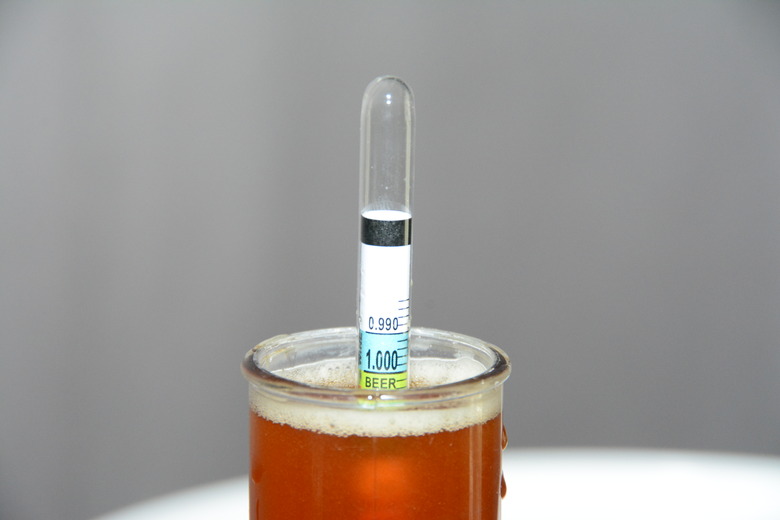The Tools Used To Measure Density
One of the basic terms used in many natural sciences is density, a physical property defined as an object's mass divided by its volume. This means that to measure density, you typically need to measure an object's mass and volume separately, then calculate its density by dividing the mass by the volume. To measure mass and volume, you need the use of several basic laboratory tools.
Scale
Scale
Mass is one of the most easily obtained measurements. Use a scale or electronic balance to determine the object's weight, or mass. This measurement is usually represented in ounces or grams for English and metric systems respectively. When measuring the mass of a liquid, first weigh the container and then tare the scale before adding the liquid.
Graduated Cylinder
Graduated Cylinder
The most accurate way to determine an object's volume, especially in the case of an irregularly shaped object, is to immerse it in water and measure the amount of water it displaces. A graduated cylinder large enough to hold both the object and enough water to fully immerse it is the best tool for this job. A graduated cylinder can also tell you the volume of a liquid simply by pouring it into an empty cylinder. Don't use a beaker to determine volume, since the scale printed on the side of a beaker may be less accurate that that on a graduated cylinder, which is especially designed for measuring.
Calculating Density
Calculating Density
Once you've measured the mass and volume of an object, you find density with a simple calculation. Divide the mass by the volume to get the density. For example, you measure a quantity of pure water in a graduated cylinder and see it comes to 11.5 ml. You place a plastic weighing dish on a scale and find its mass is 3.2 grams. When you add the water, the total comes to 14.7 grams. Subtract the mass of the dish from the total to get the mass of the water alone:
\(14.7 – 3.2 = 11.5 \text{ grams}\)
Divide 11.5 grams by 11.5 ml to get the density, 1.0 grams per ml.
Hydrometer
Hydrometer
Density is tough to measure directly and accurately, as it depends on two separate properties, mass and volume. However, density comes into play with fluids and floatation, as a denser object will always sink into a less dense fluid, and float on a fluid of greater density. A hydrometer is a special device used to determine the density of liquids. Rather than measuring the volume in a graduated cylinder and then needing to weigh the liquid to determine its mass (and, of course, subtracting the weight of its container), a hydrometer will float at a different level within a liquid based on its density. Different hydrometers use different scales for measuring density, so follow all instructions and measure carefully.
The Value of Density
The Value of Density
Now that you've determined density, what can you do with it? It is an intrinsic property of a substance, meaning any amount of pure lead has the same density, whether you have a ton or a few particles; the same holds true for any pure substance. Many substances have a well-known, published value for density that can act as a "fingerprint," allowing you to identify an unknown substance by finding its density. It will also tell you if an object is made of a pure substance or if it's a mixture. A famous story credits the Greek philosopher Archimedes, who discovered a king's crown was not pure gold; he calculated the crown's density and found it was less than that of gold.
Cite This Article
MLA
Hartman, Dennis. "The Tools Used To Measure Density" sciencing.com, https://www.sciencing.com/tools-used-measure-density-5904169/. 5 December 2020.
APA
Hartman, Dennis. (2020, December 5). The Tools Used To Measure Density. sciencing.com. Retrieved from https://www.sciencing.com/tools-used-measure-density-5904169/
Chicago
Hartman, Dennis. The Tools Used To Measure Density last modified August 30, 2022. https://www.sciencing.com/tools-used-measure-density-5904169/
